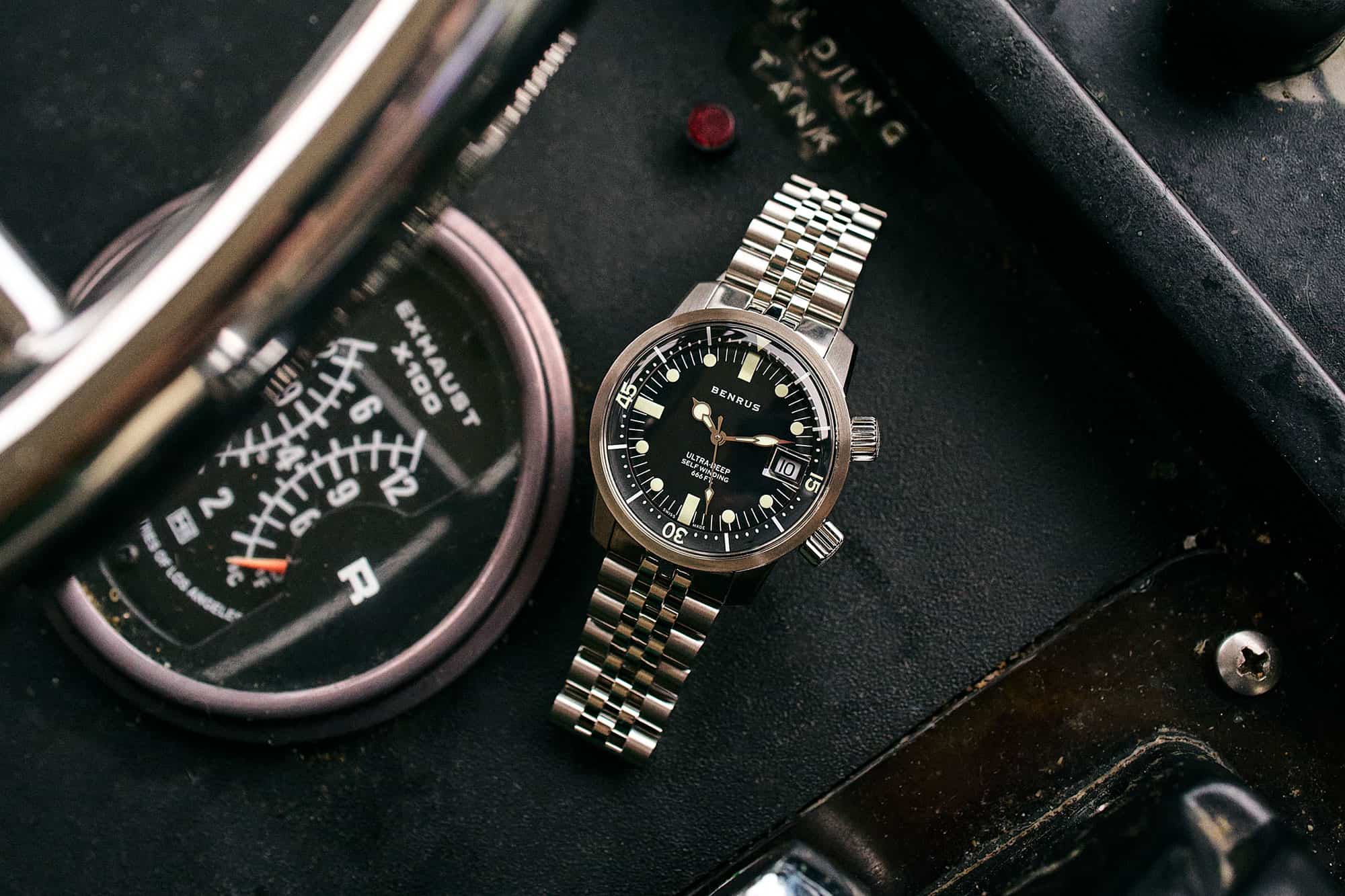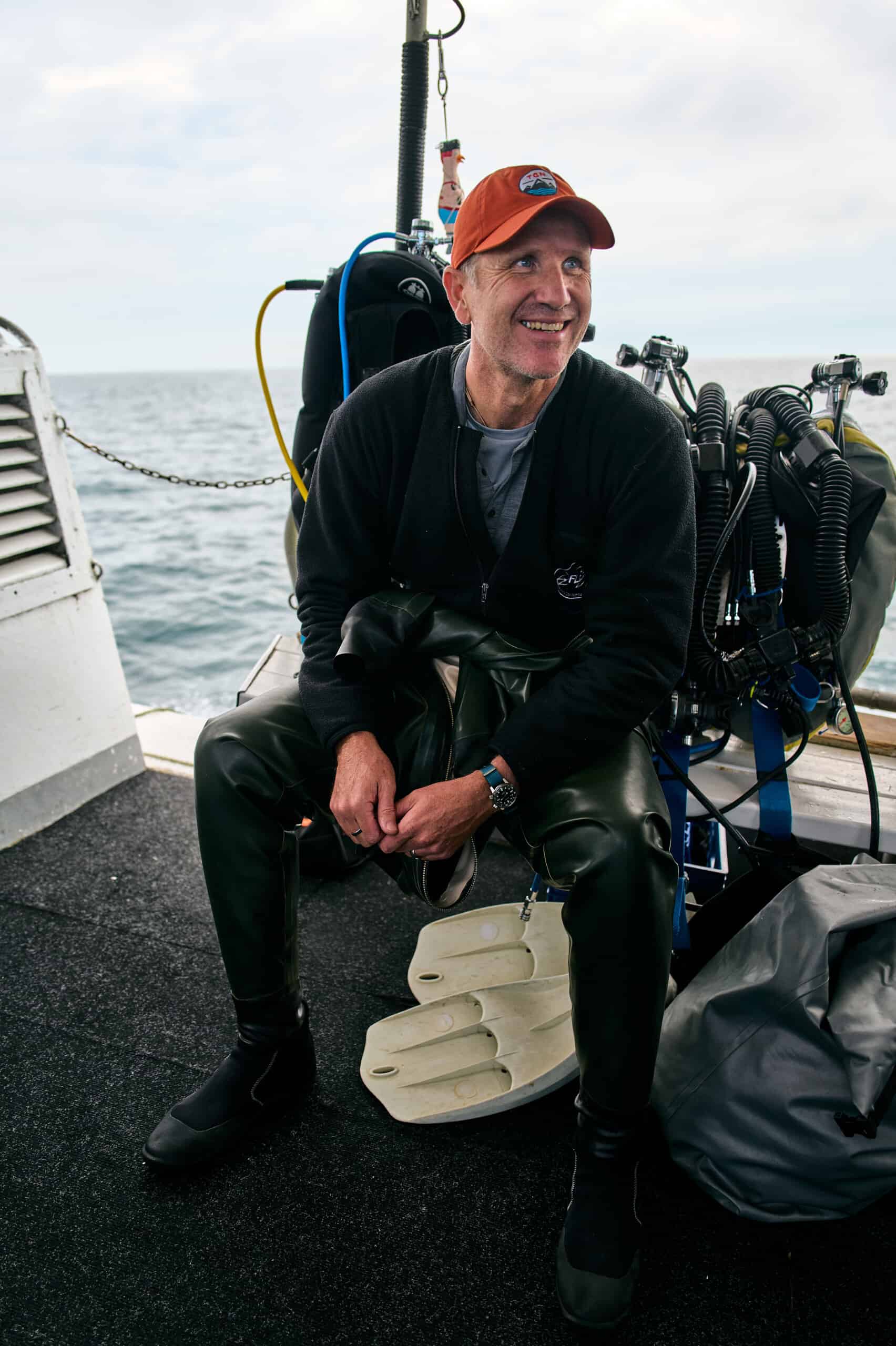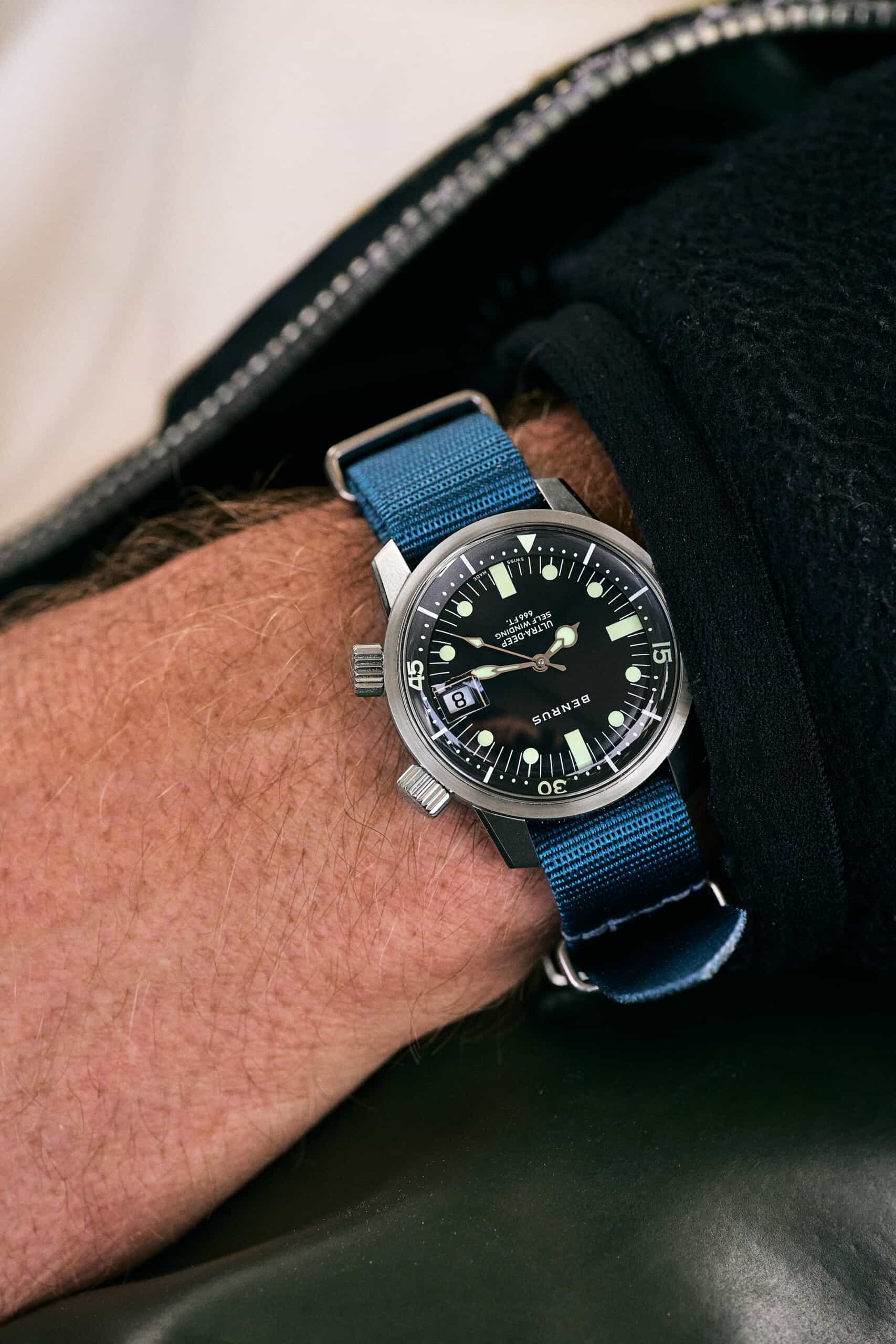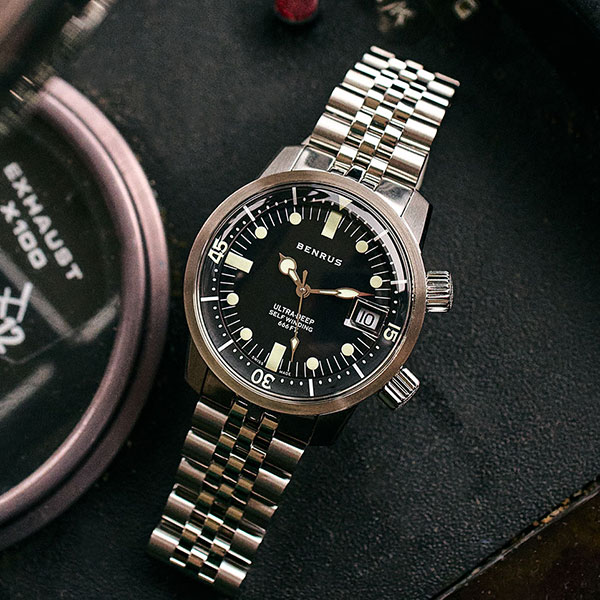Lake Michigan Gives Up Her Secrets
by
Jason Heaton
Within sight of the Chicago skyline, I stepped off the gunwale of the 47-foot Seaquest II into Lake Michigan and deflated my buoyancy wing. We’d left the dock in Hammond, Indiana under a moody sky and spitting rain, but after an hour’s cruise, the clouds parted and the lake’s surface flattened out. The sun cast filtered shafts of “God light” onto the skyscrapers in the distance, the last view I saw before descending 50 feet into the blue-green depths. I followed the yellow mooring line down to where it was tied in to an auger on the lake bed. And then, there it was: a ship’s anchor, standing proud of the mud. It was coated with algae and quogga mussels but was unmistakable, looking like the archetypal sailor’s tattoo, with a five-foot shank and one fluke pointing to the surface it hadn’t seen in over a century. An intact anchor on a shipwreck is a thrill for any diver and if I wasn’t already chilled from the 59-degree water I’d have gotten goosebumps. To mark the moment, I looked down at my left wrist. The Benrus Ultra-Deep diving watch nestled under the cuff of my thick glove read 9:14.
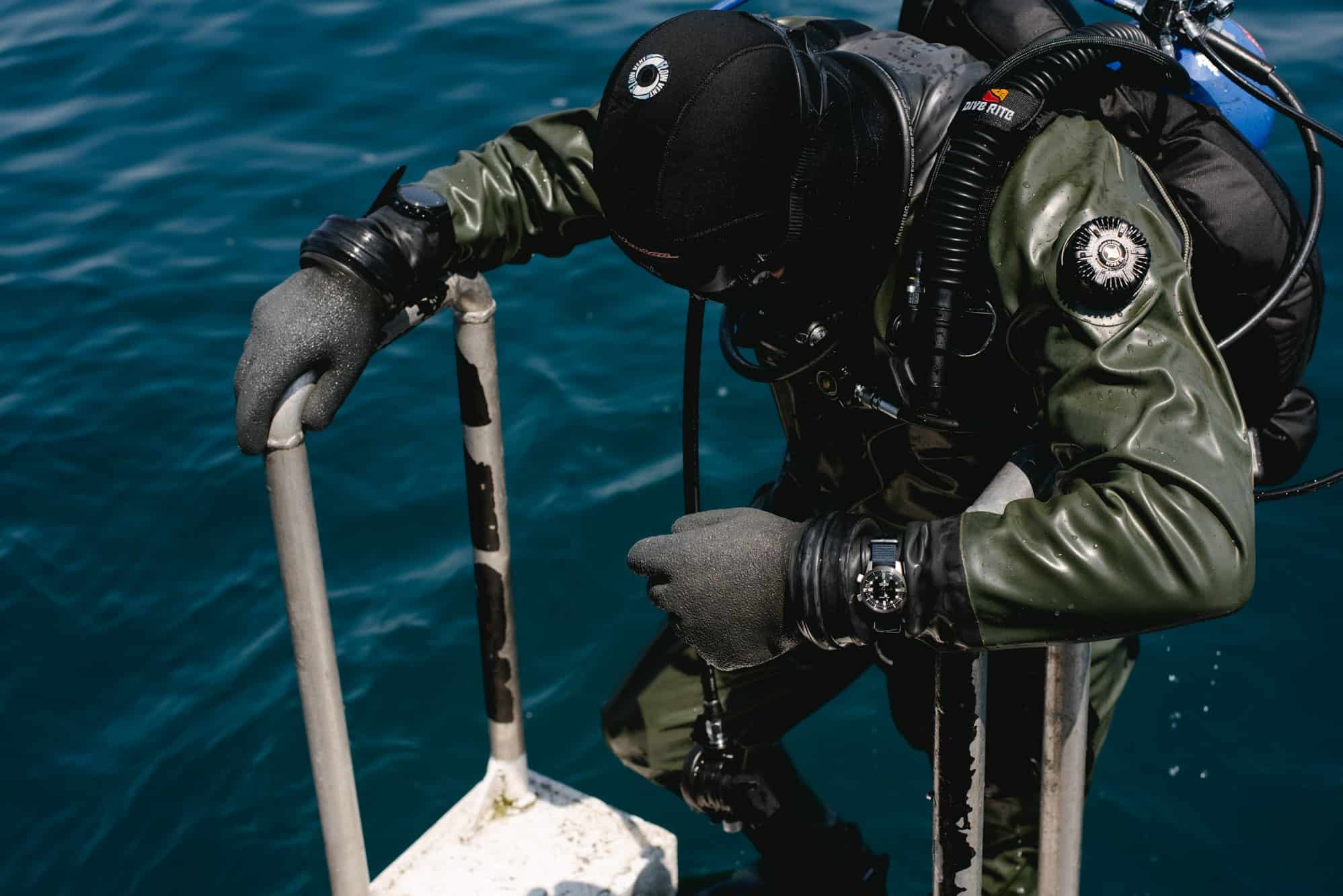
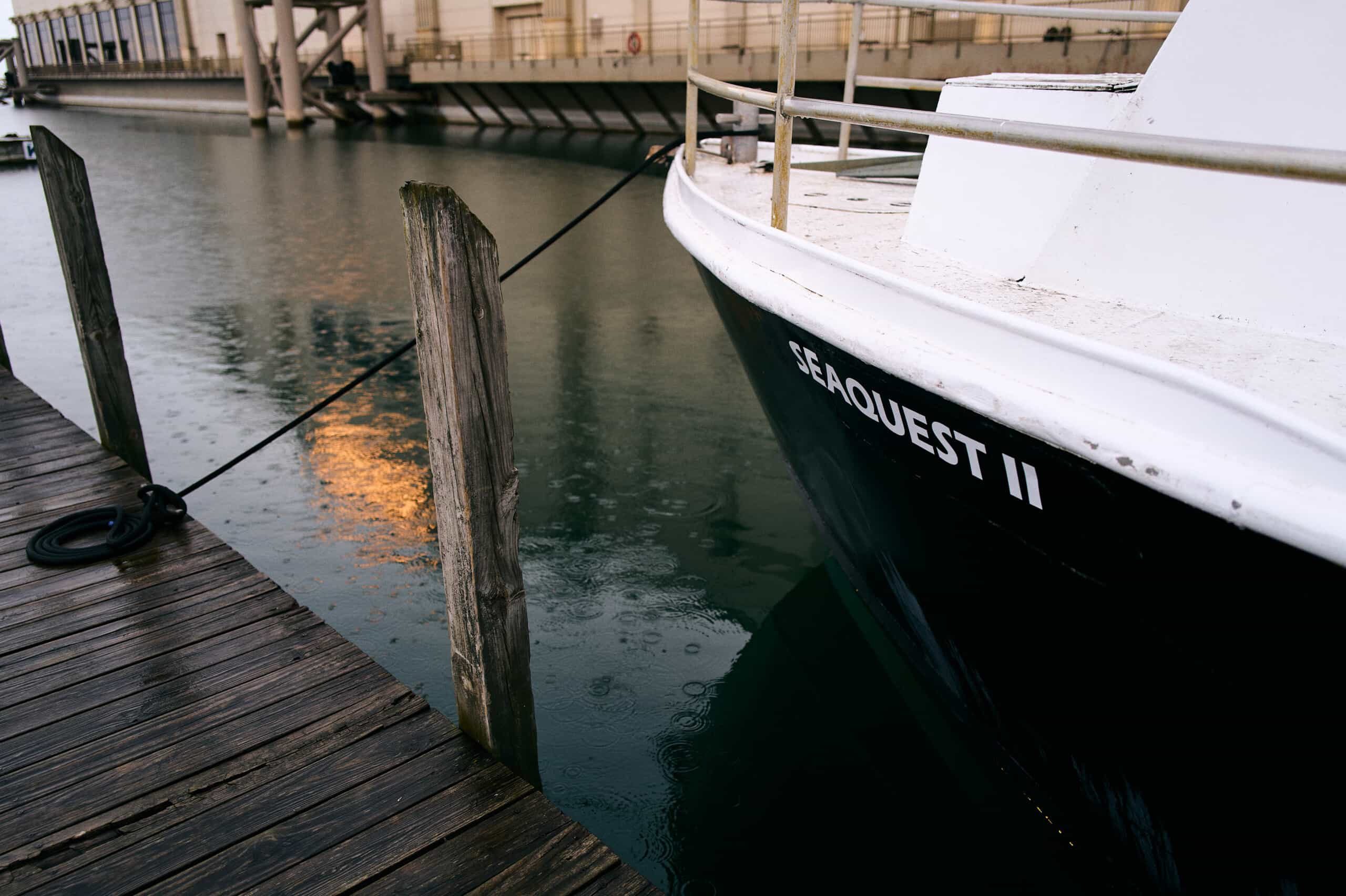
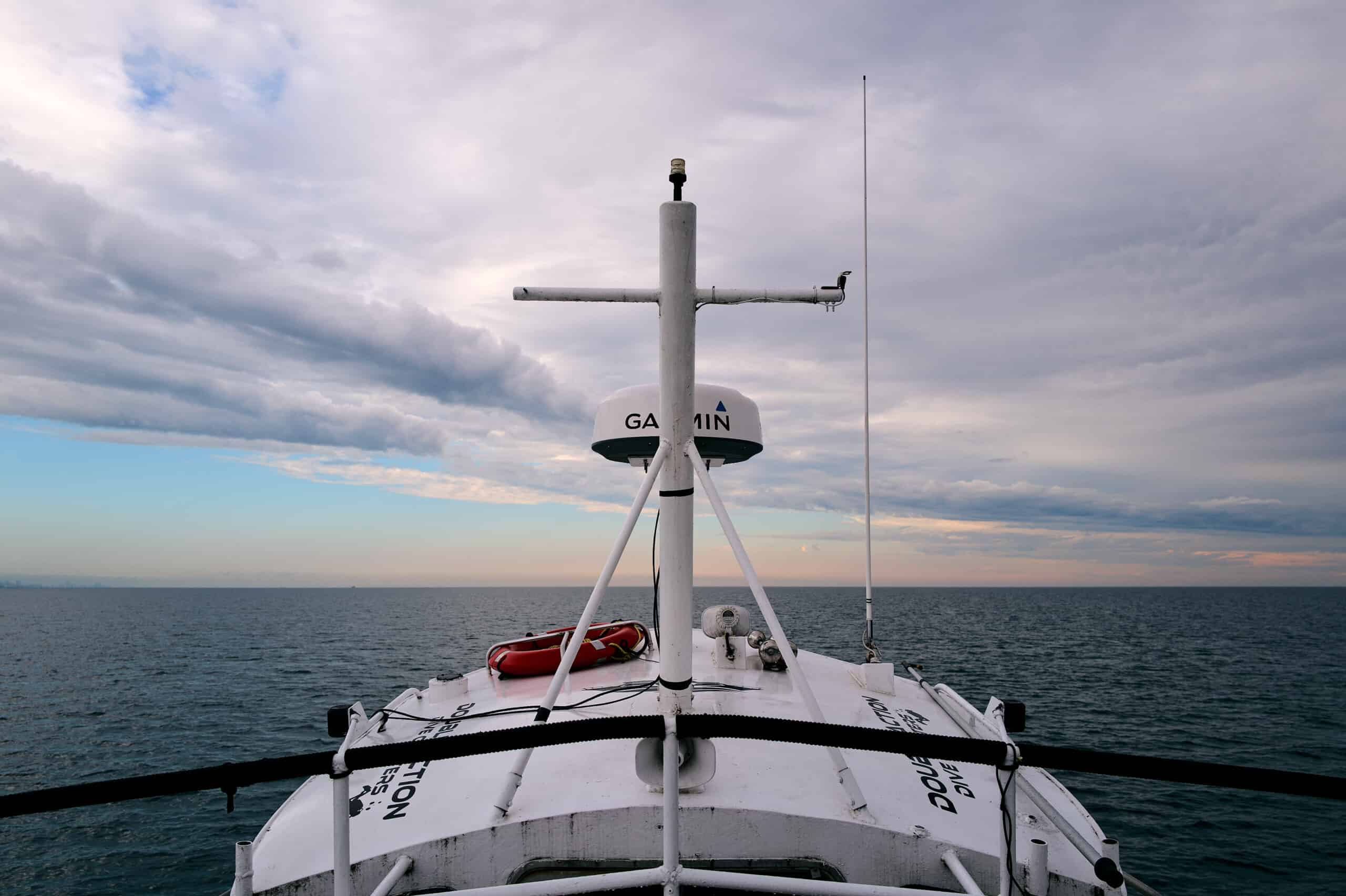
The Great Lakes, a chain of five huge inland seas that hold over 20% of the world’s freshwater, have provided a connected passage for cargo and passenger vessels since the early 19th century. Ships have carried coal, iron ore, lumber and grain between the American states and Canadian provinces that border the lakes, as well as beyond to Europe through the St. Lawrence Seaway. This long history of commercial shipping on the lakes has inevitably brought its share of tragedy. Some estimates put the number of shipwrecks littering the lake beds at over 6,000, most well preserved in the icy, salt-free depths. Many have been identified and dived, some picked clean of their artifacts or even cut up for salvage. But there are countless others that have remained undiscovered or unnamed, making the Great Lakes a shipwreck hunter’s dream.
In 2020, while running side-scan sonar en route to a different wreck, Captain Nicole Alarid of Double Action Divers noticed an unfamiliar wreck on the display. An exploratory dive the next day revealed the remains of a wooden schooner, its hull splayed out like the skeleton of an ancient sea creature, but littered with dead-eyes, piles of spilled iron ore cargo, and, most remarkably, not only the anchor, but also an intact ship’s wheel and a huge windlass. Could this finally be the David A. Wells, which sank in the vicinity in 1880? The Wells was three-masted schooner, while this wreck seemed to have only two, but all other evidence seemed to indicate its identity. While further research continues, it remains a mystery for now.
It seemed somehow fitting to be diving a newly discovered wreck while wearing a newly resurrected dive watch icon—the Ultra-Deep. The 1960s was a golden age for scuba diving, when donning an aqualung and plying the depths was daring, novel, and thrilling, fueled by the televised adventures of Cousteau and Sea Hunt. Watch companies at the time responded to the sport’s popularity with purpose-built watches. Benrus, an old American brand, released the Ultra-Deep in the mid-‘60s, making use of a new case design by the Swiss company, Ervin Piquerez SA. The case, which was used by several watch companies, was fittingly called the “Supercompressor” due to the fact that it was designed to seal more tightly with increasing depth and water pressure. Sporting an internal timing ring controlled by a second crown, the Supercompressor’s silhouette became legendary. The Benrus Ultra-Deep, with its unique, whimsical hand set, and thick domed crystal with integrated date magnifier, is a rare example, a survivor of the era, and a prize for a vintage collector, but perhaps too precious to consider getting wet.
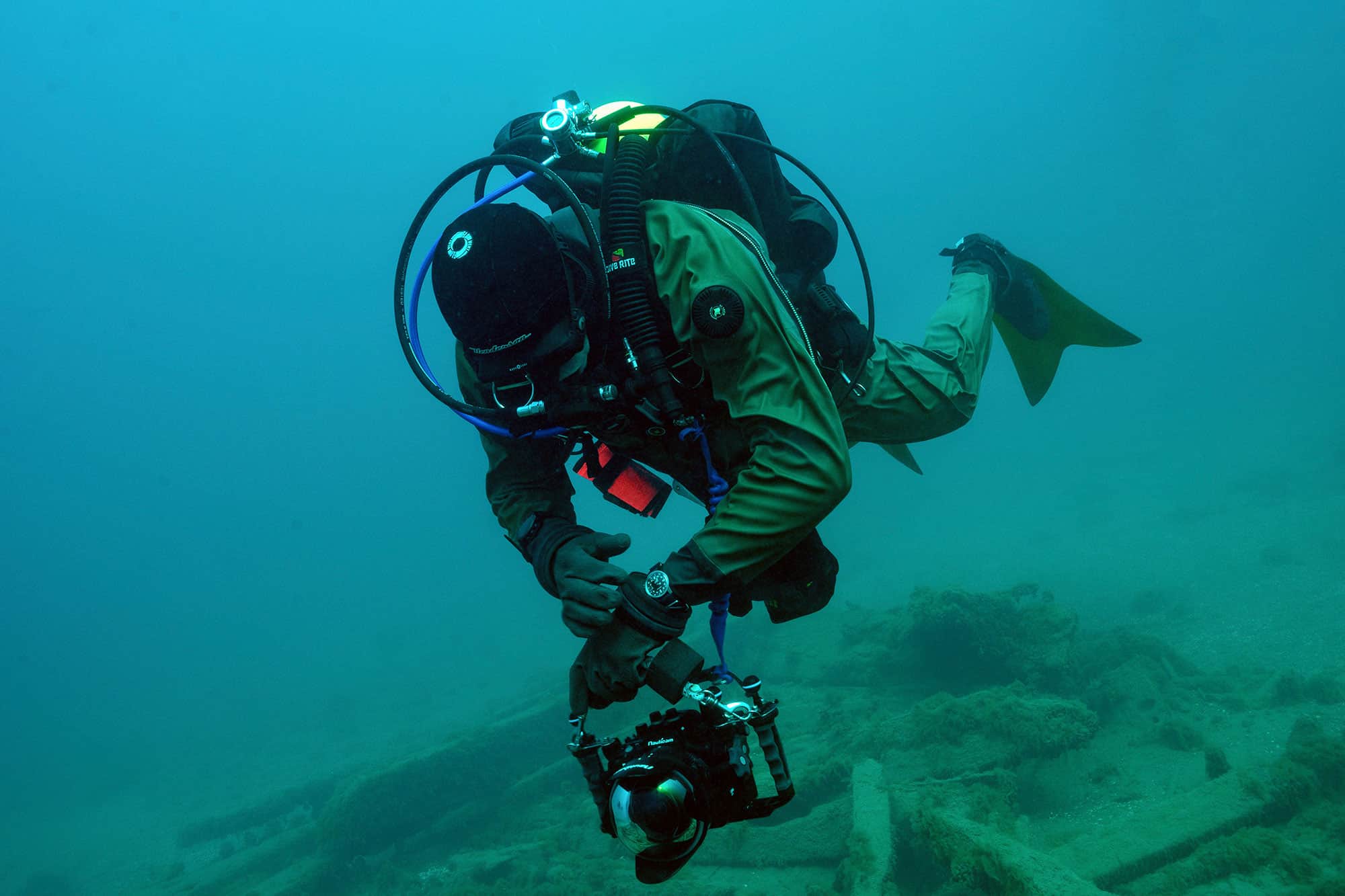
Re-issuing a vintage watch is a tricky proposition. How closely does a brand follow the original’s form? Should creamy tinted markers and hands be added to mimic the aging process that affected the 1960s watches? And then there’s the matter of size. The original Ultra-Deep was a relatively small 36.5 millimeters in diameter. Benrus chose to hew closely to the original brief. The company’s VP of Business Development and Strategy, Darius Solomon, an avid collector of vintage timepieces himself, admitted to reservations about the watch’s size but ultimately decided that a faithful reissue was the way to go. It was the right choice. On the wrist and in the hand, the new Ultra-Deep looks and feels altogether like a time capsule, compact and jewel-like, with a thick, domed crystal made from acrylic, complete with date magnifier. Solomon told me that development of the new watch saw much trial and error to achieve the 20-atmosphere pressure rating, even though none would likely be used to its full “crush depth.”
A twin-crown Supercompressor is unlike other, more conventional, dive watch designs. It has a certain elegance to it that would seem unsuited for rough use, particularly with the uniquely quaint hands fitted on the Ultra-Deep. The dial merges into the rotating timing scale to stretch from edge to edge, giving the illusion of wearing a larger watch and remaining incredibly legible. In profile, the steeply sloping strap horns hug the wrist. For my dives on the mystery wreck, I wore the watch on a long nylon strap that wrapped around my thick dive suit sleeve, but for topside or warm water use, it comes on a five-link “jubilee” style steel bracelet. While I find this band incredibly supple and comfortable, I can’t wait to try it on a vintage style rubber strap for full 1960s effect.
The twin-crown case design oozes panache, but in use with thick gloves, it is not as ergonomic as a conventional rotating dive bezel. For my dives on the mystery wreck I chose to pre-set the bezel’s zero marking a few minutes ahead before donning my gloves and I didn’t bother to use it while submerged. Underwater the watch was supremely legible—its cream on black dial and distinctive hands left no doubt as to my bottom time. I’ve said it before: a dive watch is a simple creature with a simple job—track elapsed time legibly and accurately in all conditions, and don’t leak. Though the depth of the shipwreck wasn’t even close to the watch’s depth rating, cold water can play havoc with equipment, and I’ll admit to a lingering concern about the non-locking crown that controls the timing ring. This turned out to be unfounded as the watch emerged unscathed after two back-to-back dives, living up to its Ultra-Deep name.
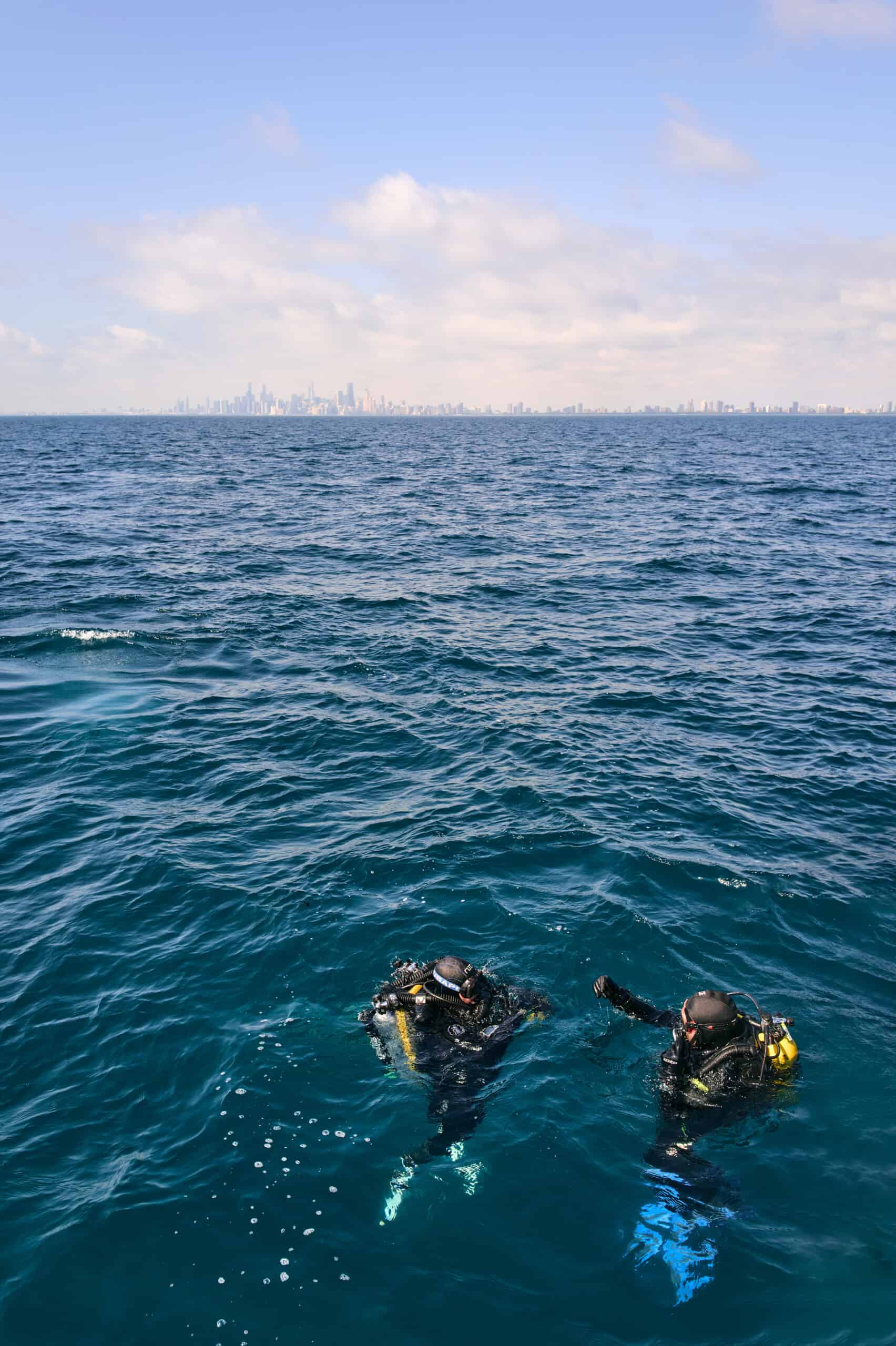
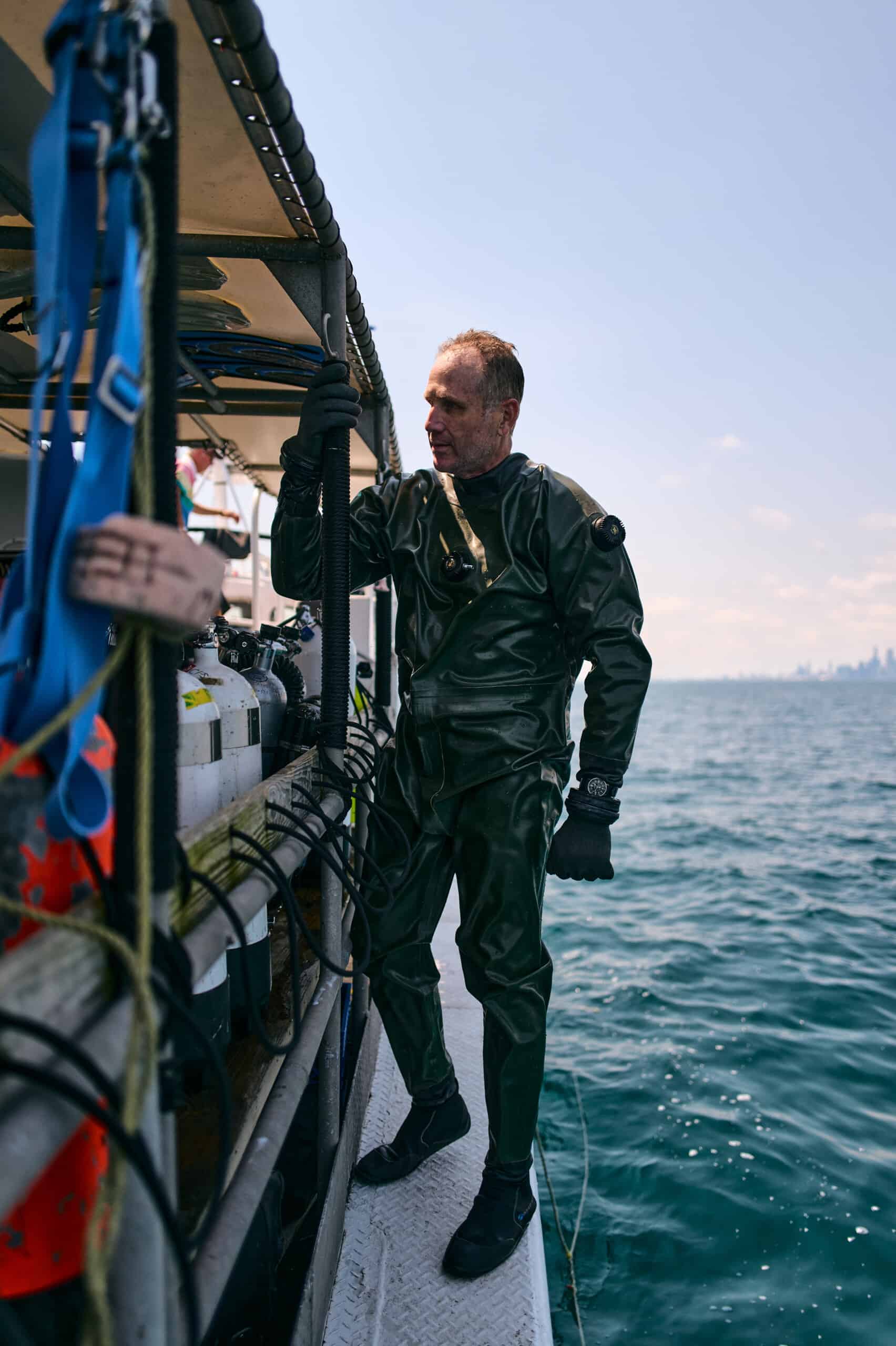
Navigating a shipwreck is typically more straightforward than on other dive sites. A wreck provides a three-dimensional map, making it difficult to get lost or disoriented. You swim along one side and return along the other. After marveling at the anchor I swam aft along the wooden planking littered with dead-eyes (the wooden blocks used for tensioning a ship’s sail rigging) until reaching the end of the ruined hull and keel. There was the second of a wreck diver’s holy grail artifacts: the ship’s wheel. For much of the early era of shipwreck discovery, a wheel would have been a prize for a diver and most were salvaged as trophies or museum pieces. Yet here it was, a diver’s dream, testament to its century and a half of anonymity, hidden on the floor of Lake Michigan, even as the great city of Chicago rose nearby. Similarly, after crossing a small expanse of lake bed that still bore evidence of the spilled iron ore cargo, I saw the third astounding piece of history—the ship’s windlass, a sort of winch used for raising and lowering sails or the anchor. It was massive, sturdy and intact. Despite its coating of aquatic life, it looked as if it could still be raised and put to use.
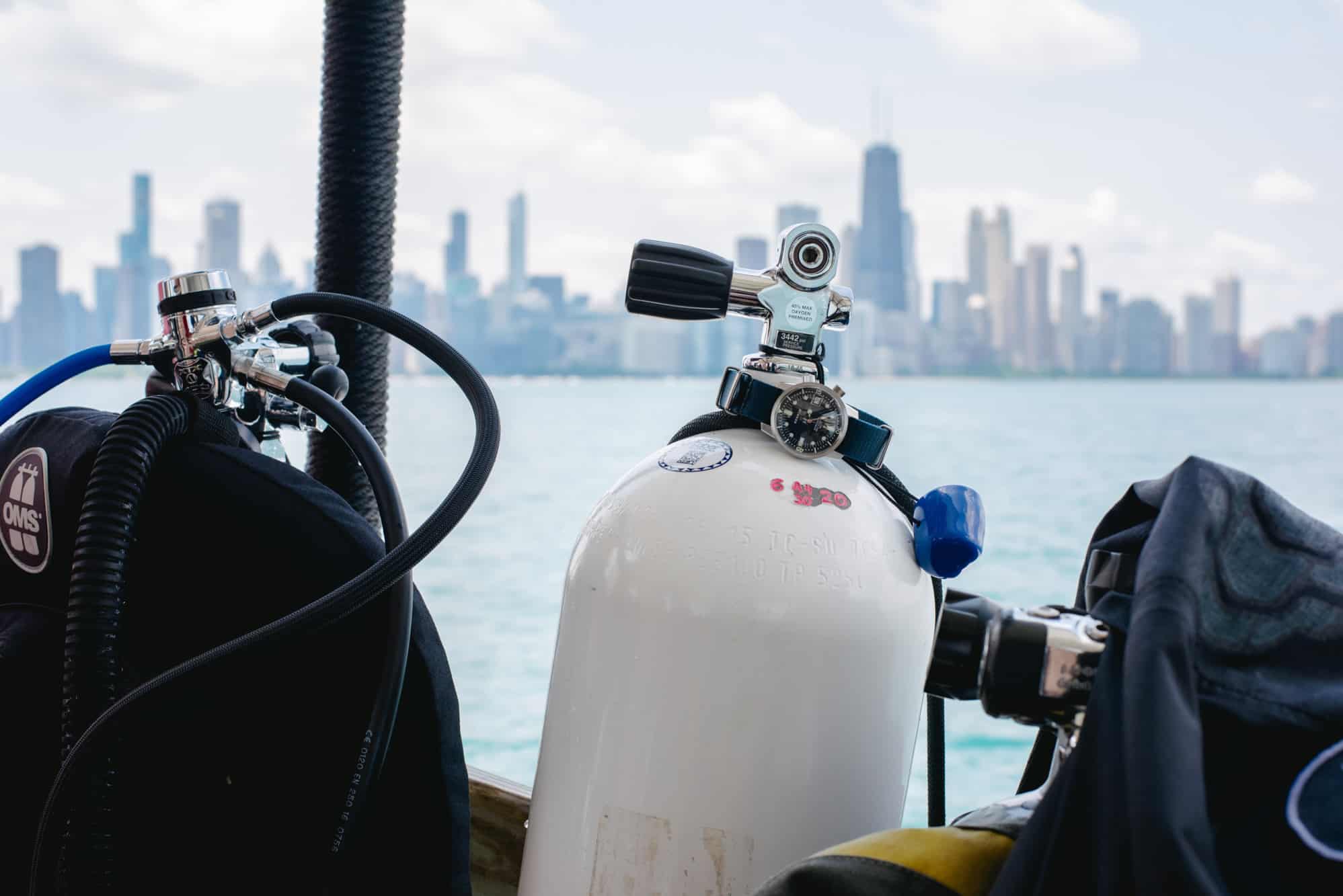
At 50 feet, a diver can safely remain for over an hour without needing to decompress. But the cold water of the Great Lakes doesn’t invite long bottom times and a glance at the Ultra-Deep indicated I’d been exploring the wreck for 30 minutes. My fingers were getting cold and the wam sunlight above beckoned. With a last look at this mysterious wreck, I angled up the mooring line and began my three-minute safety stop at 15 feet. As I lifted off the bottom the wreck disappeared into the gloom, hidden once again.
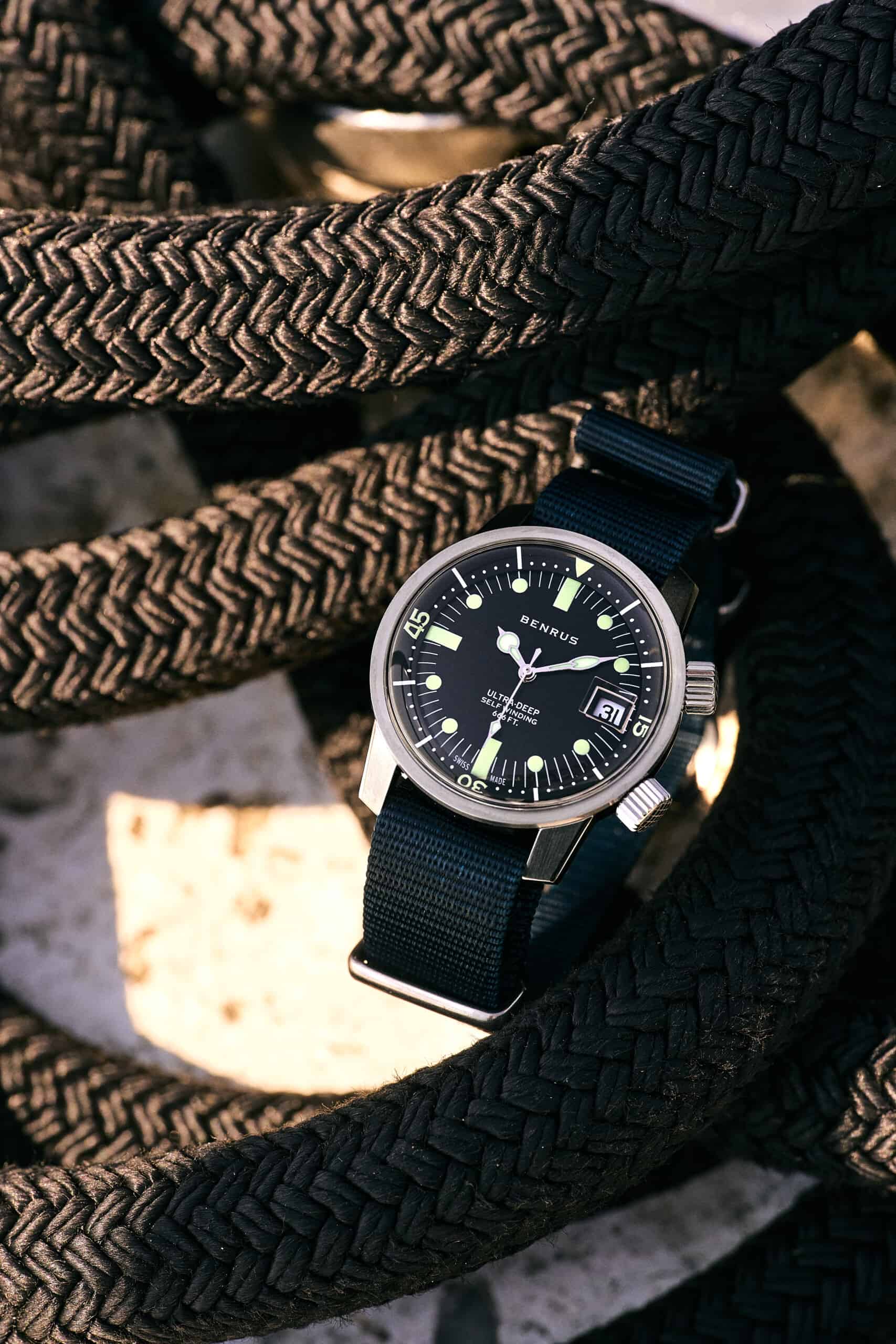
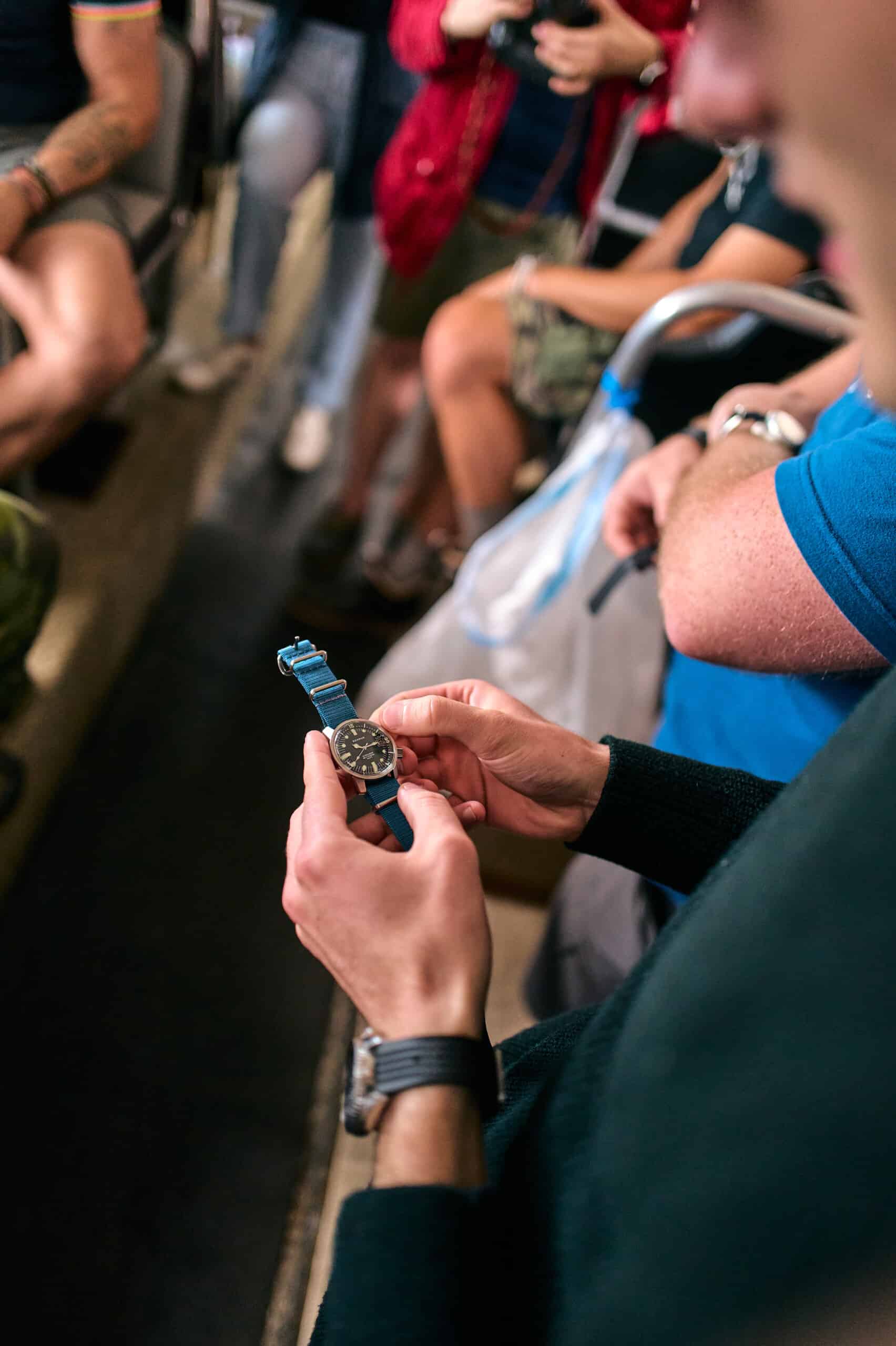
Some say most of the great wrecks in the Great Lakes have already been found and explored. So to dive a newly discovered one, replete with anchor, wheel, and windlass felt like a rare glimpse into the golden age of diving and shipwreck discovery. To do it wearing a Benrus Ultra-Deep made it all the more evocative, tying me to the lineage of those mid-century explorers who braved the cold inland seas, perhaps some even wearing the same watch.
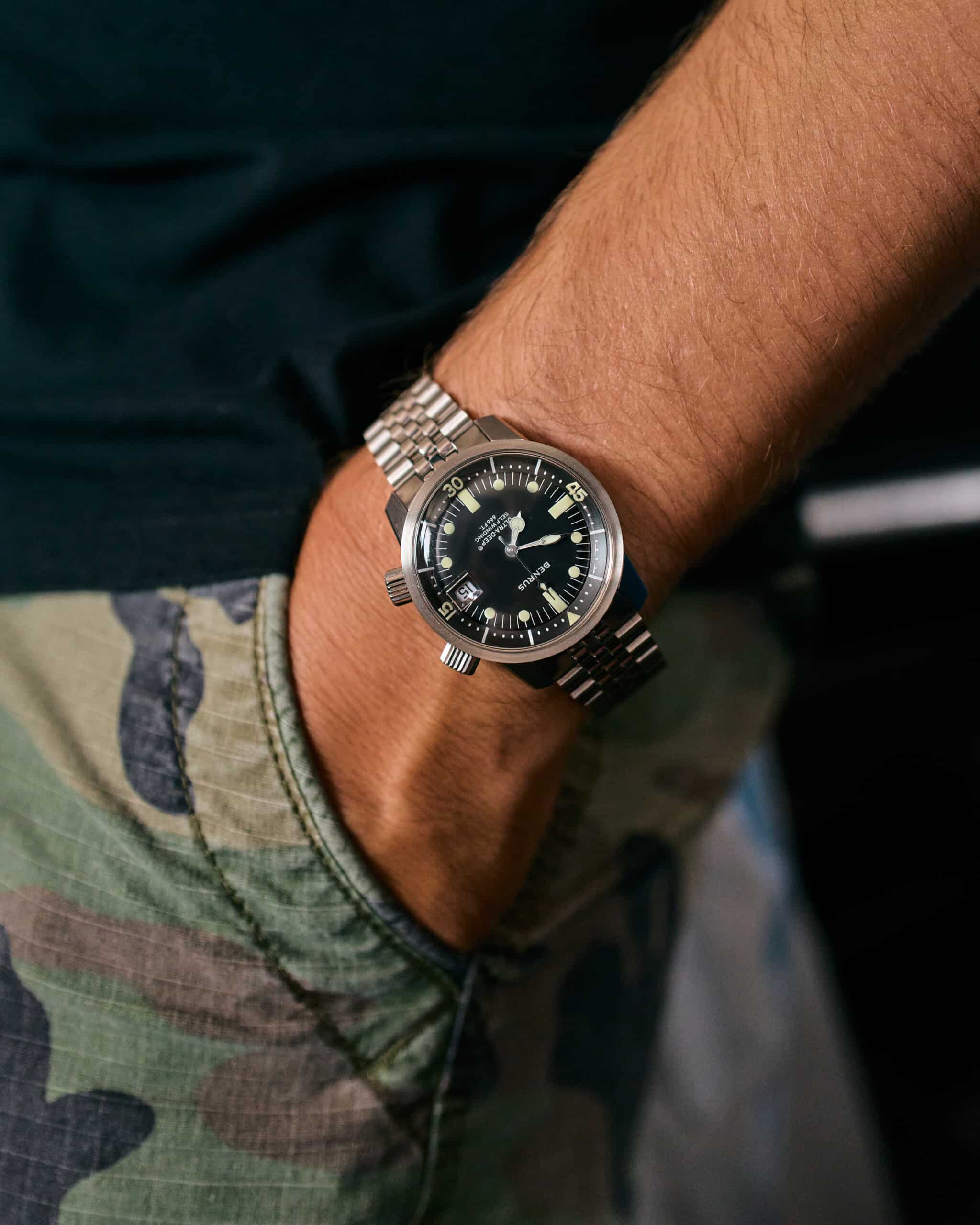
Specifications
- 316L Stainless Steel Case
- Screw-down Crown
- 36.5mm Diameter
- 13.8mm Height
- 41.5mm Length
- 18mm Lug Width
- Soprod P024 Automatic Movement
- 38-hour Power Reserve with Date
- Stainless steel Jubilee-style Quick Release Bracelet
- 20 ATM Water Resistant
- Acrylic Double-domed Crystal with Integrated Date Magnification Window
- Second Crown Actuating an Internal Rotating 60-minute Dive Bezel
- C3 Super-LumiNova™ on Dial Markers, Hands, and Bezel
- Swiss Made
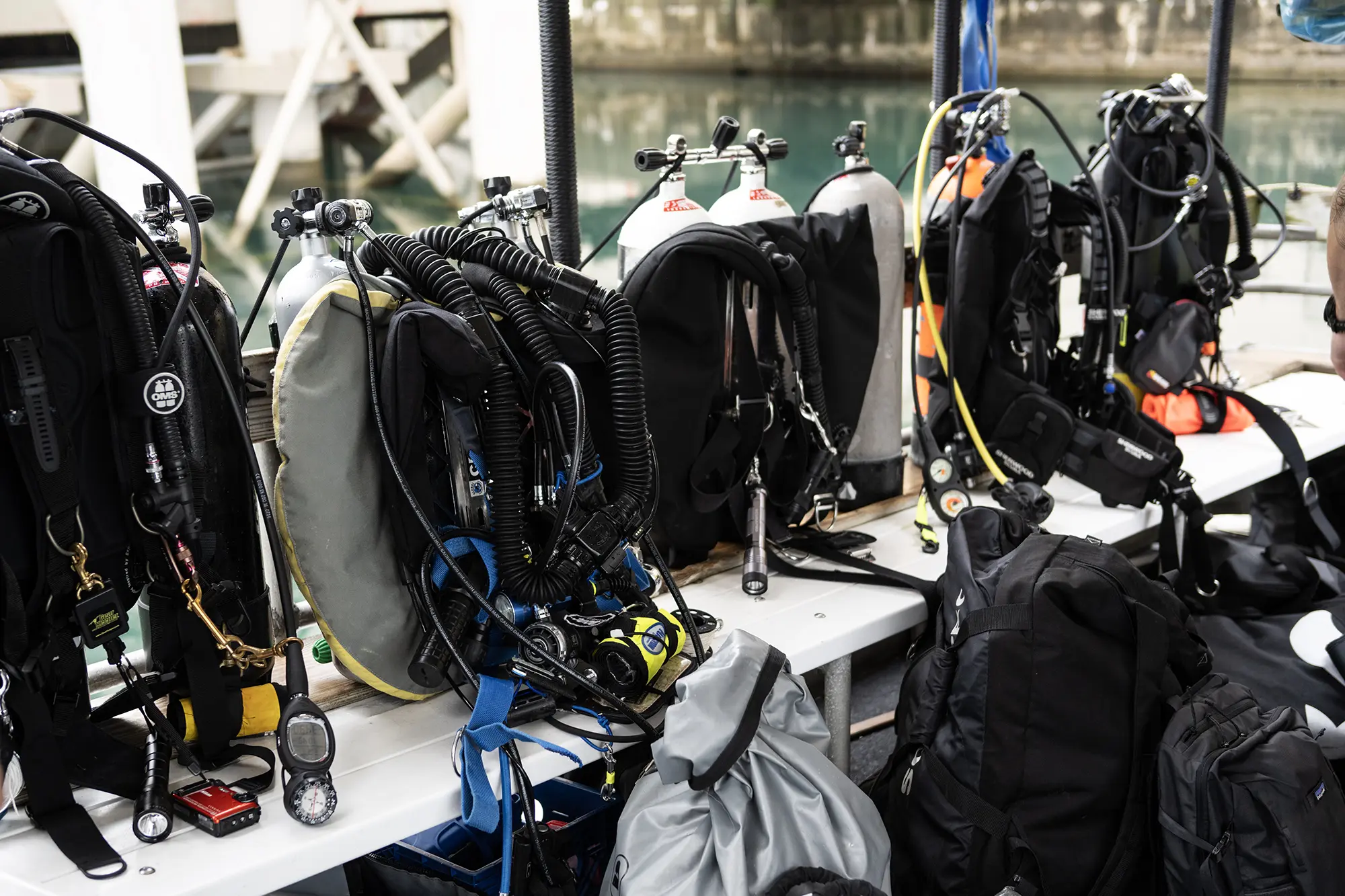
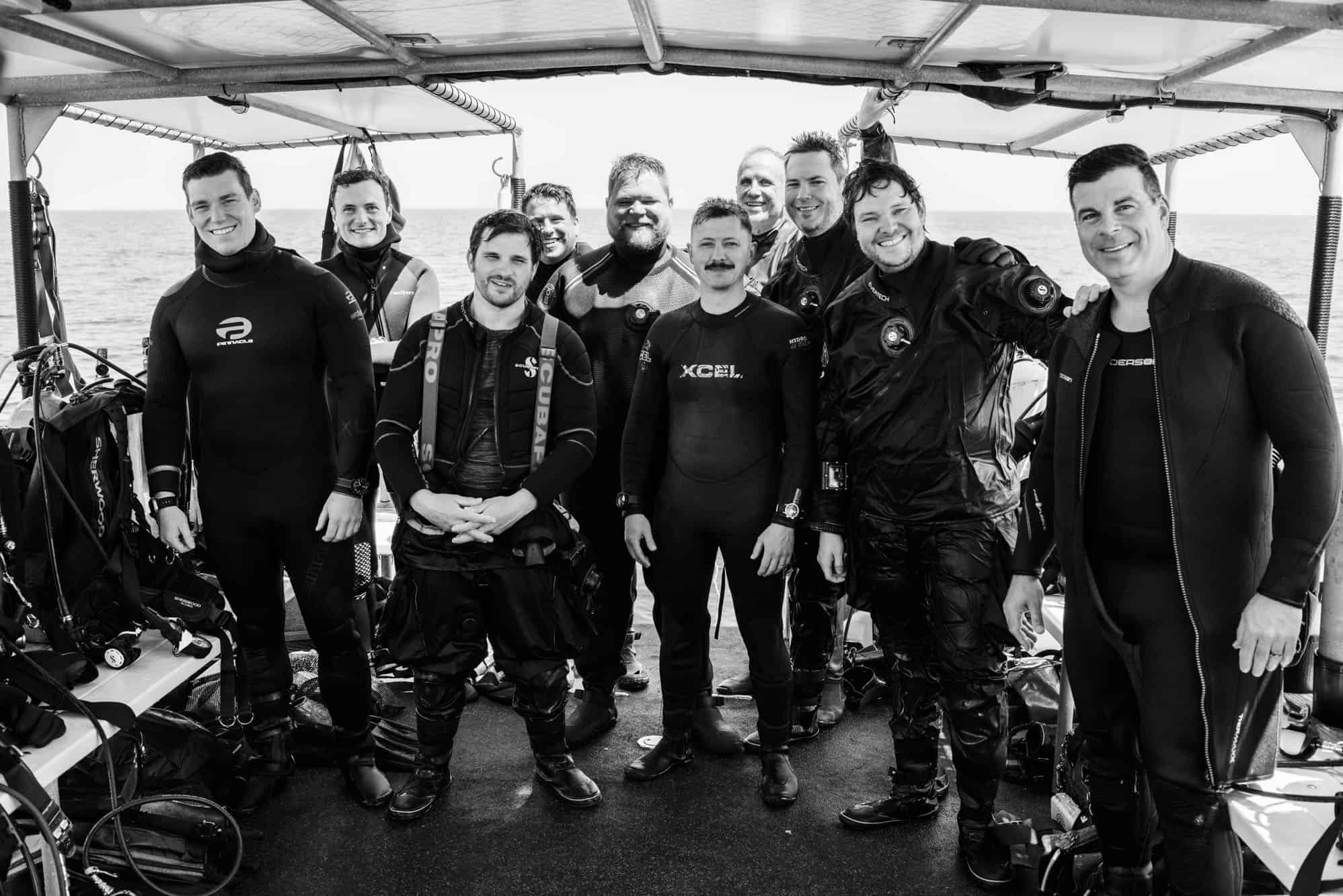









 Featured Videos
Featured Videos






